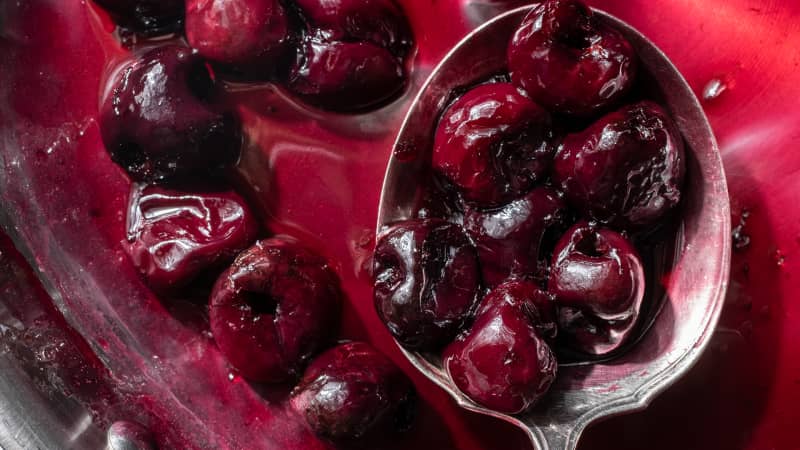There is something exhilarating about seeing a chef, tableside, splash alcohol in a pan and ignite it and then watching as the flames dance around the skillet. And while this technique, called flambéing, is often relegated to restaurants, it’s worth adding to your home cooking repertoire.
How to Flambé Safely
Published July 19, 2023.

Sign up for the Cook's Country Dinner Tonight newsletter
10 ingredients. 45 minutes. Quick, easy, and fresh weeknight recipes.
What Does It Mean to Flambé?
“Flambé” means “flamed” in French. This technique is done by pouring a high-proof alcohol (typically over 80 proof) in a pan, warming it, and carefully igniting the alcohol. Since alcohol is flammable, it catches on fire but is safely contained to the skillet. The flames burn out in 15 to 30 seconds.
Why Flambé?
This technique adds a caramelly roasty flavor to the food and it allows the chef to cook off much of the alcohol while maintaining some of the flavor of the spirit. Plus it’s impressive-looking. It’s typical in many dessert recipes such as Cherries Jubilee, Crêpes Suzette, and Bananas Foster but can also be used in savory cooking like our Tequila-Poblano Pan Sauce or Flambéed Pan-Roasted Lobster.
Cherries Jubilee
A dessert that's fit for a queen . . . and also your dinner-party guests.Safety Tips for Flambéing
Since you’re literally cooking with fire, there are some safety precautions to follow.
1. Use a stainless-steel skillet with a long handle to make sure you can hold the skillet but the flames stay far away from you. Don’t use a nonstick skillet because it can damage the coating of the pan.
2. Turn off your exhaust fan, tie up your hair, and roll up your sleeves before getting started. Make sure there is nothing close to the pan that may accidentally catch on fire once ignited.
3. Measure out the alcohol you’re using and pour it from the measuring cup not the bottle. When adding alcohol to a very hot skillet, it is at risk of igniting and you do not want the flame to travel to the bottle.
4. If you’re using a gas stove, turn off the heat before adding the alcohol to avoid having any alcohol spill over and ignite the burner.
5. Keep your distance from the ignition by using a long barbecue lighter or long matches.
6. Have a lid nearby in case you need to smother the flame, but it’s always best to let the flame go out on its own.
